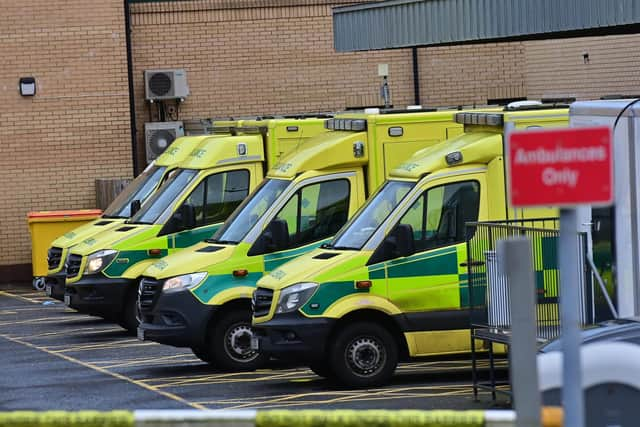Ambulance wait time targets missed on hundreds of occasions
and live on Freeview channel 276
Health chiefs set the target in December as part of a series of measures to alleviate pressures in emergency departments.
However, new figures released by Northern Ireland Ambulance Service (NIAS) show the target has been missed on 16% of occasions when ambulances have arrived at hospital, with one area failing to meet the three-hour limit on more than a third of occasions.
Advertisement
Hide AdAdvertisement
Hide AdNorthern Ireland’s health service has been under sustained pressure in recent months, with the public being advised on several occasions of long waits at emergency departments due to capacity issues.


Between the target being introduced on December 20 and January 2, the total number of ambulance arrivals at hospitals was 4,385, and the three-hour target was missed 709 times (16%).
In the Northern trust region, there were 926 arrivals, with the target missed 242 times (26%).
In the Southern trust region there were 852 arrivals, with the target missed 167 times (20%).
Advertisement
Hide AdAdvertisement
Hide AdIn the Belfast region there were 1,165 arrivals, with target missed 89 times (8%).
The Western trust region had the best handover rate, with the three-hour maximum wait being missed 22 times from 878 arrivals (3%).
The South Eastern trust area had the worst rate – from 564 arrivals the target was missed 189 times (34%).
An NIAS spokesman said: “A number of measures were announced by all HSC trusts, including NIAS, prior to Christmas to improve the flow of patients through hospitals to reduce the risk to patients associated with overcrowded emergency departments and delayed ambulance responses.
Advertisement
Hide AdAdvertisement
Hide Ad“One of these measures related specifically to ambulance handover times which have been a significant factor in delayed ambulance response to those patients in the community whose need is most urgent.
“Pressures across the health and social care system have resulted in handover times lengthening over the past number of years.
“It has not been unusual for NIAS staff to wait in excess of three hours and, on occasion, significantly longer to hand patients over to staff at under-pressure emergency departments.
“The measure announced prior to Christmas was to ensure, while not losing sight of the fact that the handover target for ambulances at EDs remains at 15 minutes, that no patient should have to wait in excess of three hours in an ambulance.
Advertisement
Hide AdAdvertisement
Hide Ad“Ongoing monitoring by ambulance staff and clinicians from within the ED would remain in place to safeguard against deterioration in any patient’s condition.
“Any deterioration observed would be escalated to ED staff, who would then take appropriate steps to provide the clinical care necessary to address the patient’s needs.
“The timing of this measure, in advance of Christmas, was to embed the process in time for an anticipated surge in demand throughout January and February.
“The figures provided cover the period 20 December to 2 January and the intention and hope remains that over the coming weeks the number of handover times greater than three hours will reduce significantly.”
Last week the ambulance service said it was examining eight incidents of delayed response where deaths were involved.